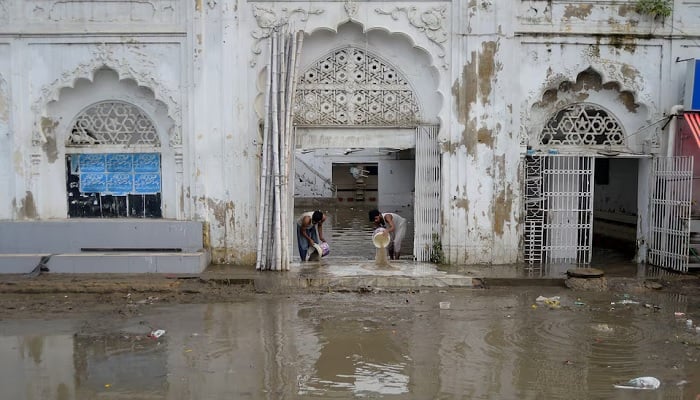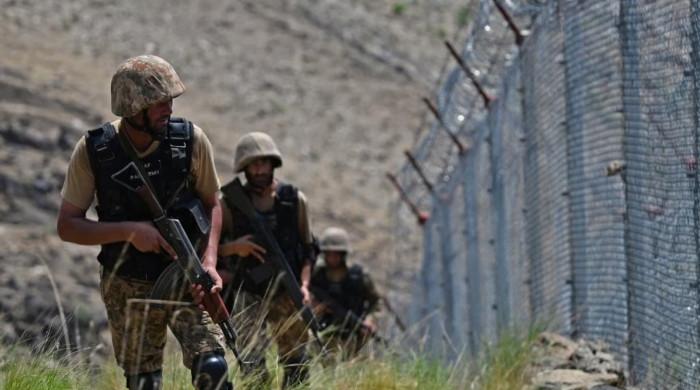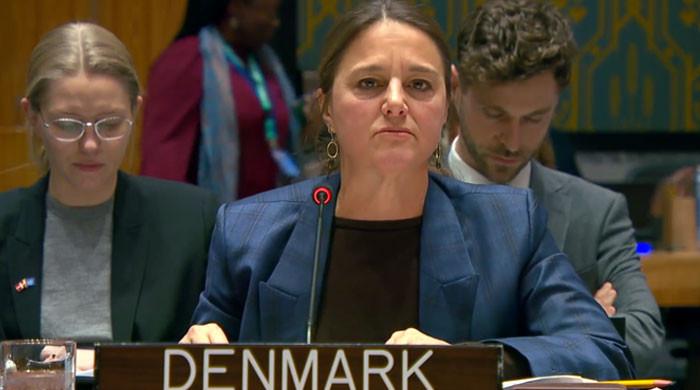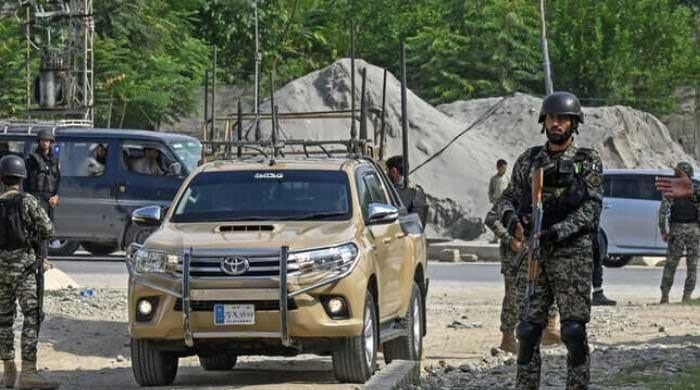Karachi rain system expected to move out today, light showers likely
Another spell is forecast to hit other parts of Sindh, including Karachi, between August 27 and 30, says Met Office
August 22, 2025

- Several parts of city remain submerged in stagnant rainwater.
- Citizens protest against up to 48-hour-long power suspension.
- Around 100 feeders yet shut, with restoration work underway.
KARACHI: The Pakistan Meteorological Department (PMD) said on Friday that the rain system that battered Karachi over the past three days was expected to move out today, with only light showers likely in the morning.
However, another spell of rain is likely to hit other parts of Sindh later this month, according to a Met Office spokesperson.
"A fresh monsoon system will enter Sindh on August 27, bringing rain to Karachi and other parts of the province until August 30," said the spokesperson, adding that the existing system should fizzle out today.
The rains began in Karachi on Tuesday, causing widespread flooding as rainfall reached levels not seen in years in some parts of Pakistan's financial capital and biggest city - home to more than 20 million people.
The disastrous rainfall led to 17 deaths, primarily caused by drowning, road accidents, building collapse, and electrocution.
The downpour disrupted power, mobile phone services, and flights, officials said.
Television footage showed cars and other vehicles floating down streets and houses submerged in water.
In Karachi, several major roads developed potholes within hours, with Jahangir Road once again resembling its old, battered state. Water accumulated on the road from Teen Hatti to Gurumandir, slowing traffic to a crawl.
The Korangi causeways were also closed after rising levels in the Malir River made crossing unsafe.
Underpasses at Sohrab Goth and Drigh Road remained inundated, while rainwater lingered on Airport Road and the route from Safora to Pehlwan Goth, badly affecting traffic flow.
The situation forced several private schools to announce closures for the day. Some shifted classes online, though the Sindh government has not issued any directive for a blanket closure of schools.
Power supplies
The sudden downpour disrupted the city's electricity system, and efforts to restore supplies were hampered by waterlogging and traffic congestion, which made access difficult.
However, prolonged power cuts deepened the helpless citizens' misery.
Residents of Gulistan-e-Jauhar Block 9 staged protests against K-Electric over outages stretching past 56 hours, saying they had been left without both electricity and water.
Children, women, and the elderly are suffering,” said one protester outside the utility’s office, where people gathered with drums to register their anger.
Power suspensions were also reported in City Villas, Muslim Housing Society (Scheme 38), Saddar, and Jubilee Market, where residents said supply had been cut since Tuesday evening.
K-Electric, in a statement, said electricity was being provided to 2,000 of its 2,100 feeders across the city.
Around 100 feeders remained shut, with restoration work underway, the spokesperson added.
But outages of 24 hours or longer were reported in multiple blocks of Gulistan-e-Jauhar as well as in the Architectural Society and Karachi Revenue Judicial Society.
For many residents, the combination of waterlogged streets and extended blackouts has become a grim reminder of how vulnerable Karachi remains to even a modest spell of rain.
This year, nearly 750 people have died since the season started, according to authorities.
Pakistan is among the world´s most vulnerable countries to the effects of climate change and is increasingly facing extreme weather events.
Monsoon floods submerged one-third of Pakistan in 2022, resulting in approximately 1,700 deaths.












